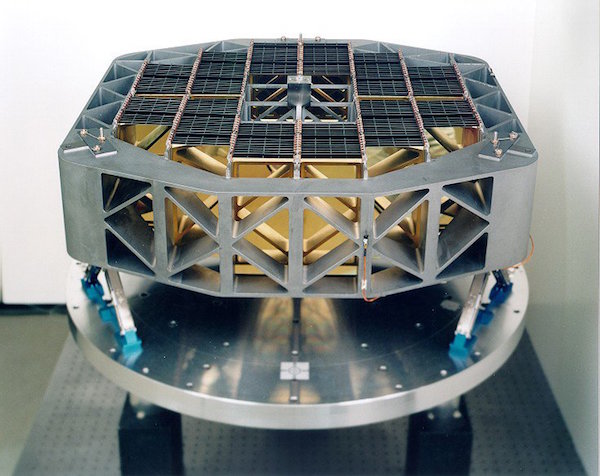Reflection Grating Spectrometer
A spectrum grating makes a spectrum by physically separating the different wavelengths of light. There are two kinds of gratings: a transmission grating and a reflection grating. A transmission grating creates a spectrum when light passes through the grating. A prism is a type of a transmission grating, since light has to pass through it to be separated into a rainbow.
A reflection grating creates a spectrum when light reflects off a surface. A common reflection grating is a CD or DVD. The rainbow of colors that appears on the back of a CD or DVD appears because the tiny grooves on the disk separate light into its constituent colors.
In the case of XMM, the reflection gratings are nothing more than mirrors with tiny grooves on them. The mirrors are covered with a gold layer, and there are 600 grooves per millimeter: so thin that one single human hair would cover 15 of them! Once dispersed out into a spectrum, the X-rays are focused on the two RGS cameras. These cameras share the telescope focusing plane with the EPIC cameras.

One of XMM-Newton's two Reflection Grating Arrays (Copyright: ESA.)
XMM-Newton is the first X-ray mission to fly a reflection grating. It can identify lines of elements like iron, oxygen, silicon, and magnesium, which are common in astrophysical plasmas.
Many institutions participated in the construction of the RGSs: Mullard Space Science Laboratory (MSSL), the Paul Scherrer Institute (PSI) in Villigen (Switzerland), Space Research Organisation Netherlands (SRON), and Columbia University (New York USA).



